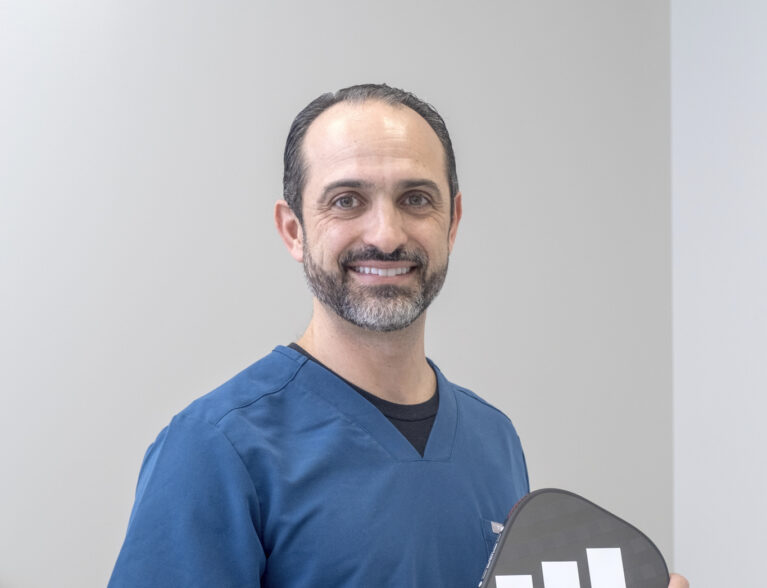
Just think of all the things our wrists enable us to do – typing on a keyboard, lifting objects, combing our hair, hitting a baseball. The list is endless. The wrist is a remarkable joint that allows for a wide range of motion, but this flexibility makes it vulnerable to injuries, including distal radius fracture.
“A distal radius fracture is the most common wrist fracture, especially in the older population,” said Dr. Joao Panattoni of Vero Orthopaedics. “That’s because when you are older and you fall, you try to catch yourself. We call that F-O-O-S-H (falling on outstretched hand). That will create some hinging on the bone and then the bone will break, and you have some angulation. Right after the fall you’ll have some pain and swelling, and you won’t be able to use that hand. Sometimes you’ll even be able to see some angulation where the forearm looks a little curved backwards.”
Successful recovery from a distal radius fracture depends on getting the right treatment early on.
“If someone goes to an urgent care or hospital, they may not get a physician who has orthopaedic training and wind up with a splint or cast that is doing more harm than good,” Dr. Panattoni said. “One thing we see very common is a splint or cast that is too tight or doesn’t properly immobilize the fracture. This will cause stiffness, more pain and more problems.
“Don’t go to someone who will just put you in a cast because when a patient wears a cast for 30 days or more, there’s a 50 percent rate of malunion, meaning the fracture ends up healing in an improper position. It’s important to see a trained orthopaedic specialist who will properly access the injury and determine the proper treatment, whether it be immobilization or surgery.”
Should the injury require surgery, volar locking plates are the most commonly used metallic device in the open reduction and internal stabilization of distal radius fractures. The surgeon makes an incision on the palm side of the wrist, the fracture fragments are repositioned and a metal plate with screws is fixed to the radius to repair the fracture.
“The procedure itself takes about two hours and we perform it right here in our surgery center at Vero Orthopaedics as an outpatient procedure,” Dr. Panattoni explained. “We do a block that numbs the arm and controls the pain during and after the procedure. We also administer anesthesia with a mask to control the breathing of the patient.
“The titanium plate has screws that are locked, and they screw into the plate. This creates a fixed angle device so the screws are not fixing on the fracture or the bone itself. The plate supports the bone under the joint surface. It’s positioned under the tendons, so the patient won’t feel the plate. This keeps the fracture stabilized and keeps the bone where it’s supposed to be.
“I move everything during the surgery to make sure the fracture is stabilized and does not fall apart. Then I’ll close the wound with sutures, place the arm in a splint and send the patient home the same day. The following day we’ll change the dressing, clean the wound, create a customized splint made out of Velcro so the patient can easily take it on and off, and start the patient on physical therapy. They can basically go back to their everyday life right away and start doing more strenuous activities in two to three months.”
While most distal radius fractures are the result of an unpredictable accident, there are steps individuals can take to reduce their risk.
Falls are the No. 1 cause of this fracture so taking precautions to prevent falling is the key.
Doctors advise their patients to use handrails on stairs and wear proper footwear with good traction. When engaging in sports or activities with a risk of falling, wear wrist guards or protective equipment when possible. and use proper technique and ergonomics to minimize stress on the wrists. Keep your bones strong by eating a balanced diet rich in calcium and vitamin D and exercising regularly.
While a distal radius fracture can be a painful and limiting injury, with prompt diagnosis and proper treatment most individuals can expect a good recovery. The key is to see an orthopaedic specialist to fix the fracture within the first week to restore function and mobility to the wrist.
Depending upon the severity of the fracture this may be accomplished through conservative measures like splinting, casting or wrapping, or it may require a more involved surgical procedure. By understanding the causes, recognizing the symptoms and taking preventative measures, individuals can reduce their risk of this common fracture.
Dr. Joao Panattoni received his medical degree and internship training from Marilia Medical School in Marília, Brazil. He later completed his orthopaedic surgery residency at Municipal Hospital of Tatuapé in São Paulo, Brazil, followed by further residency training in hand surgery at Campinas State University in Campinas. Dr. Panattoni went on to complete several years of specialized fellowship training in hand surgery and microsurgery at the Christine M. Kleinert Institute for Hand and Microsurgery in Louisville, Kentucky and a one-year fellowship in hand and reconstructive microsurgery at National University Hospital in Singapore. Dr. Panattoni joined Vero Orthopaedics in 2018 and is part of the orthopaedic team seeing patients on a walk-in urgent care basis at Orthopaedic Urgent Care, 3955 Indian River Blvd., Vero beach. Call 772-569-2330 to schedule an appointment or just walk in if you need immediate care.



